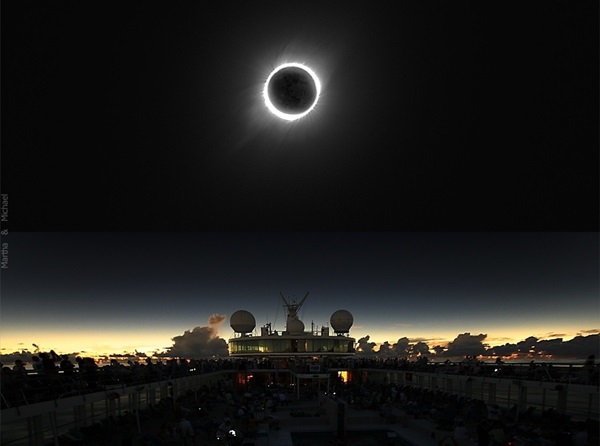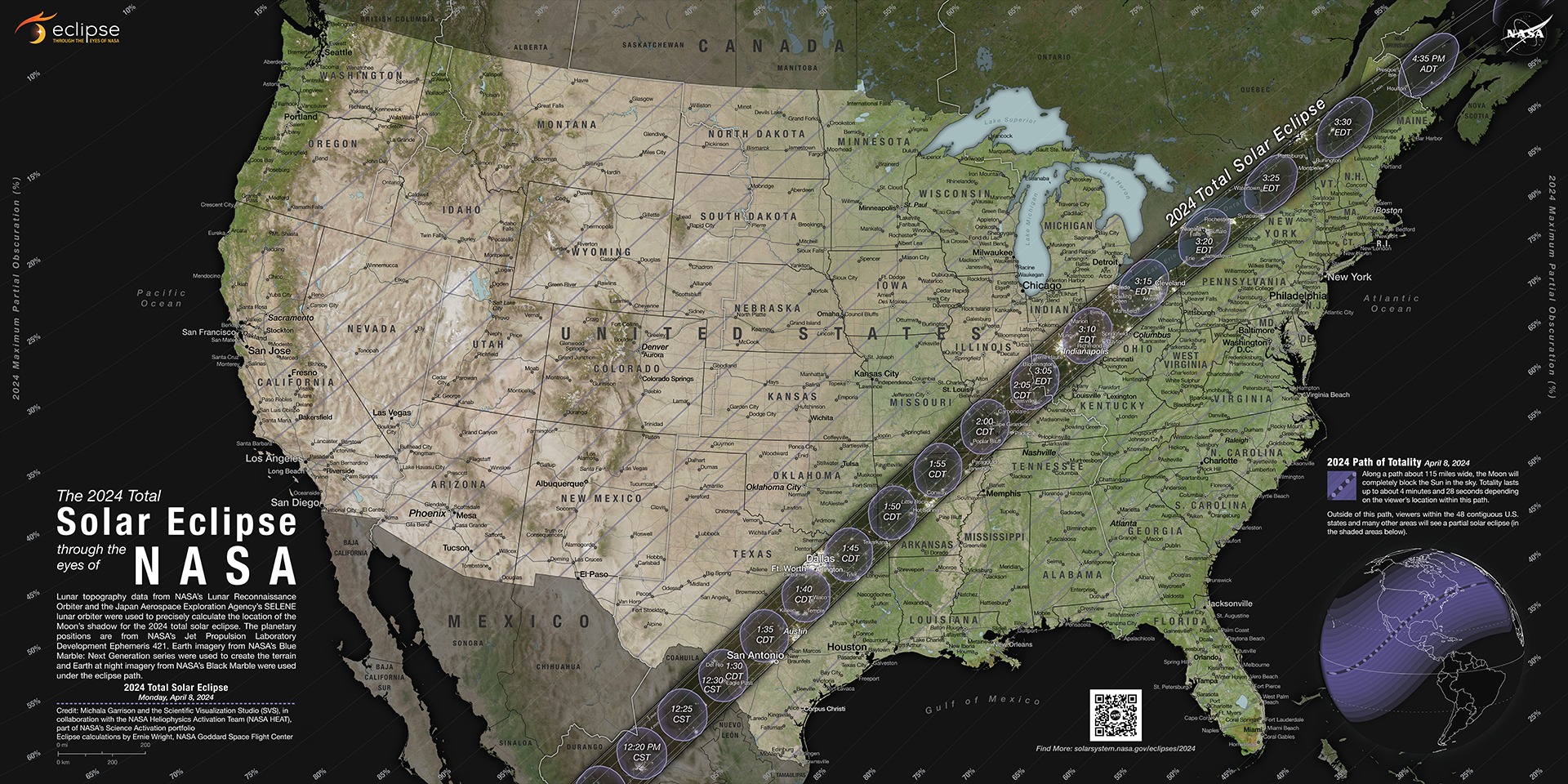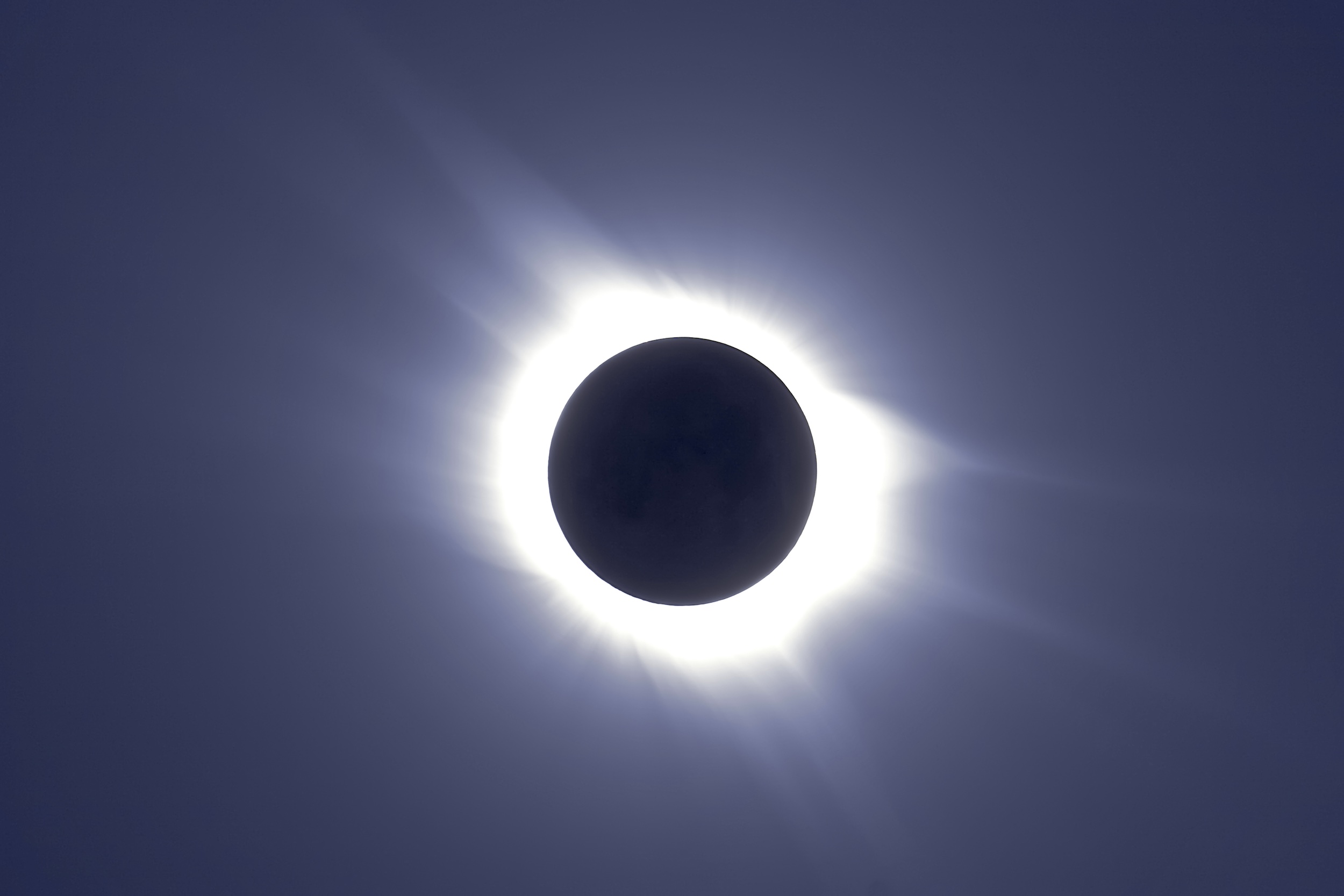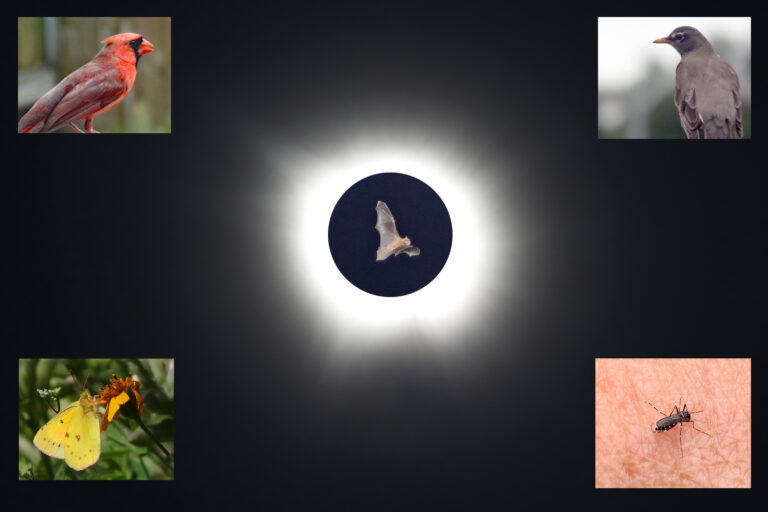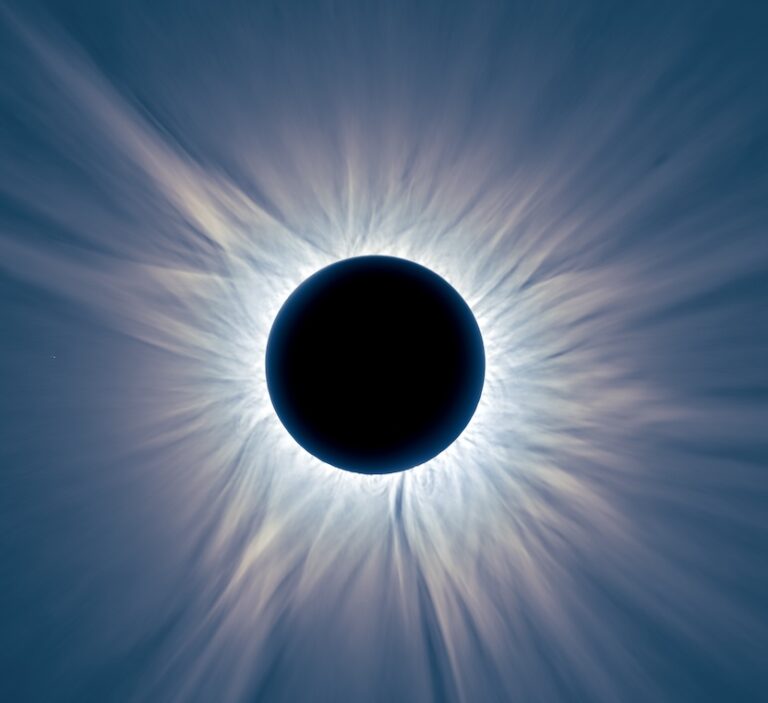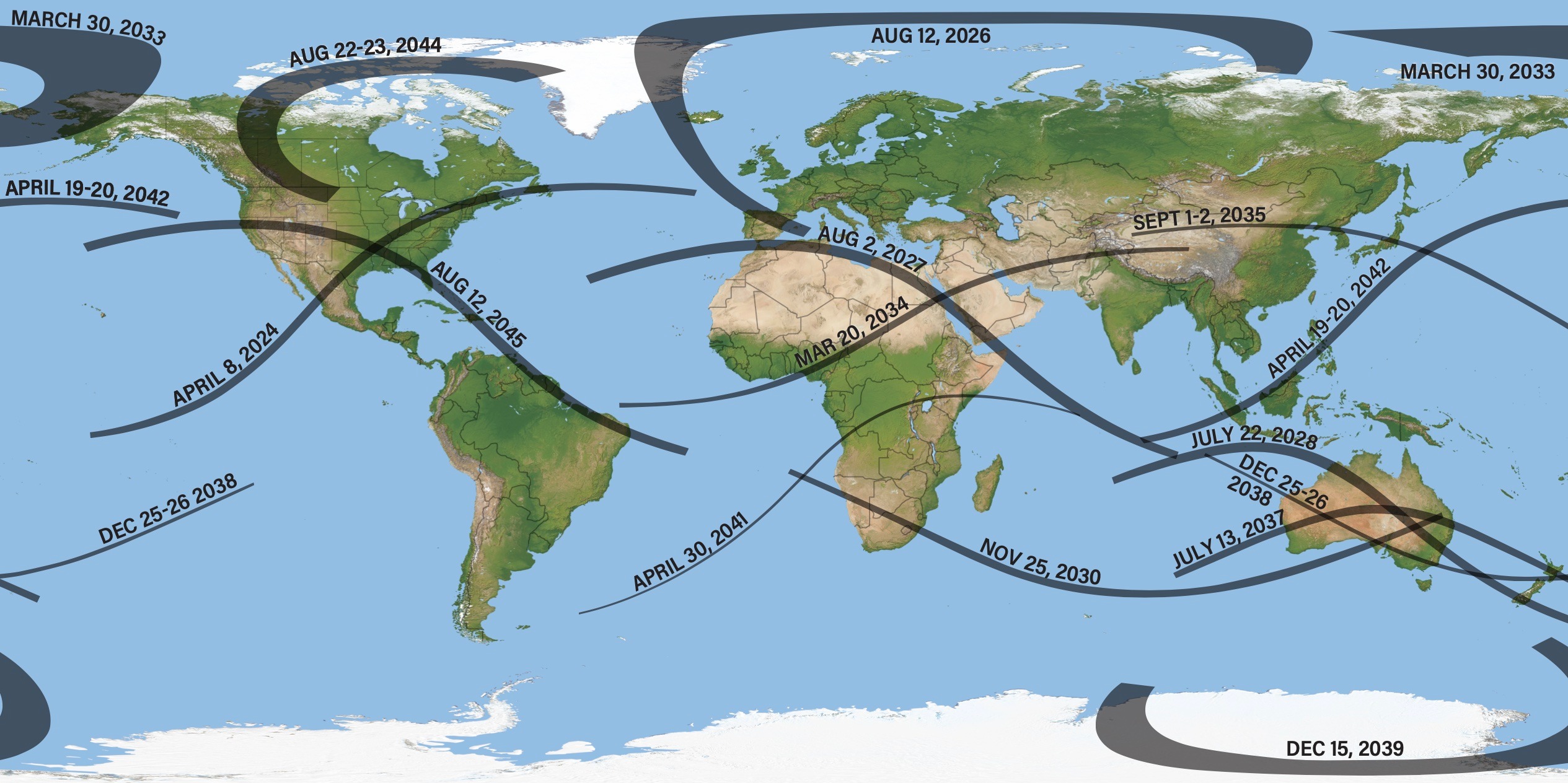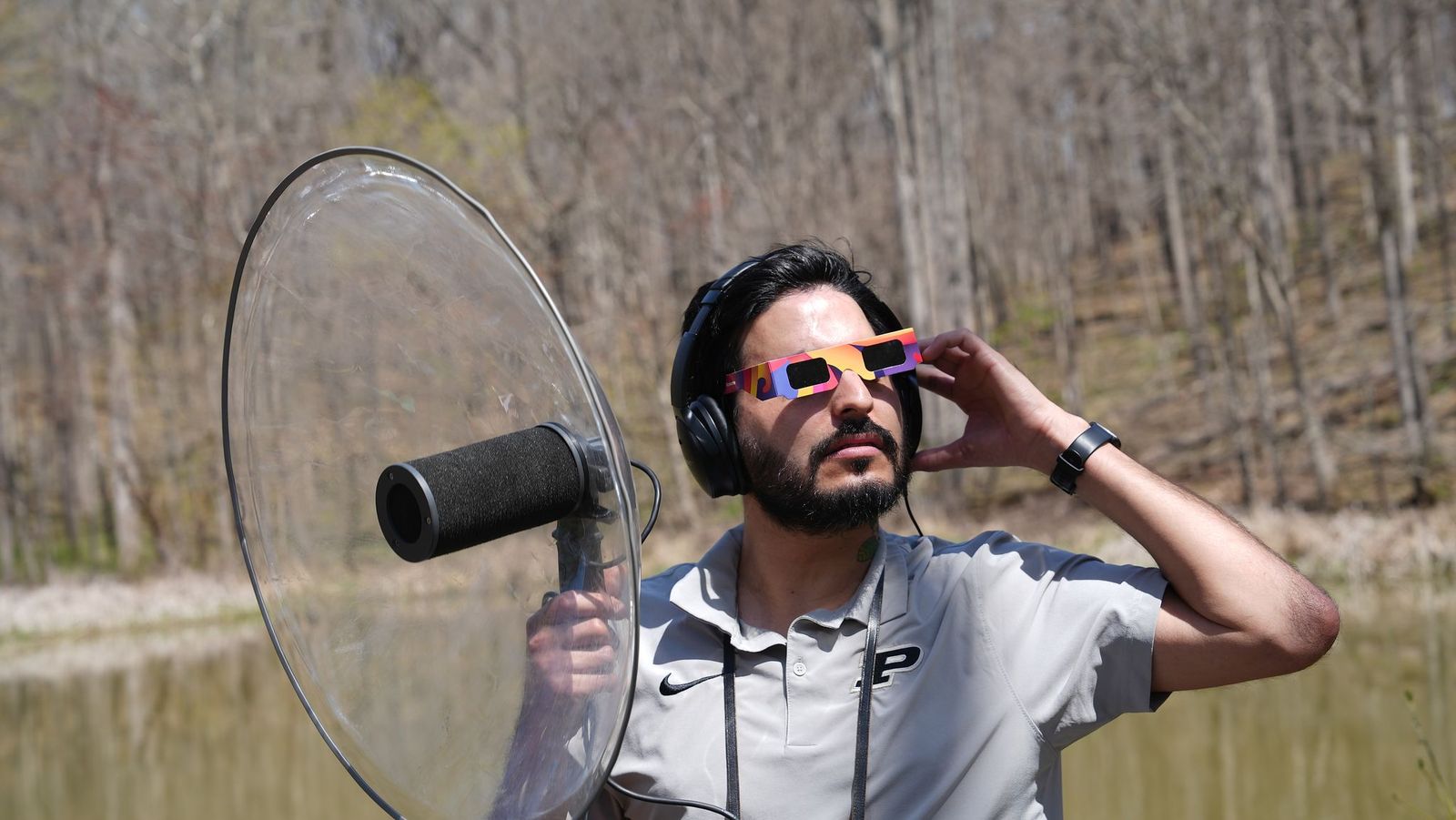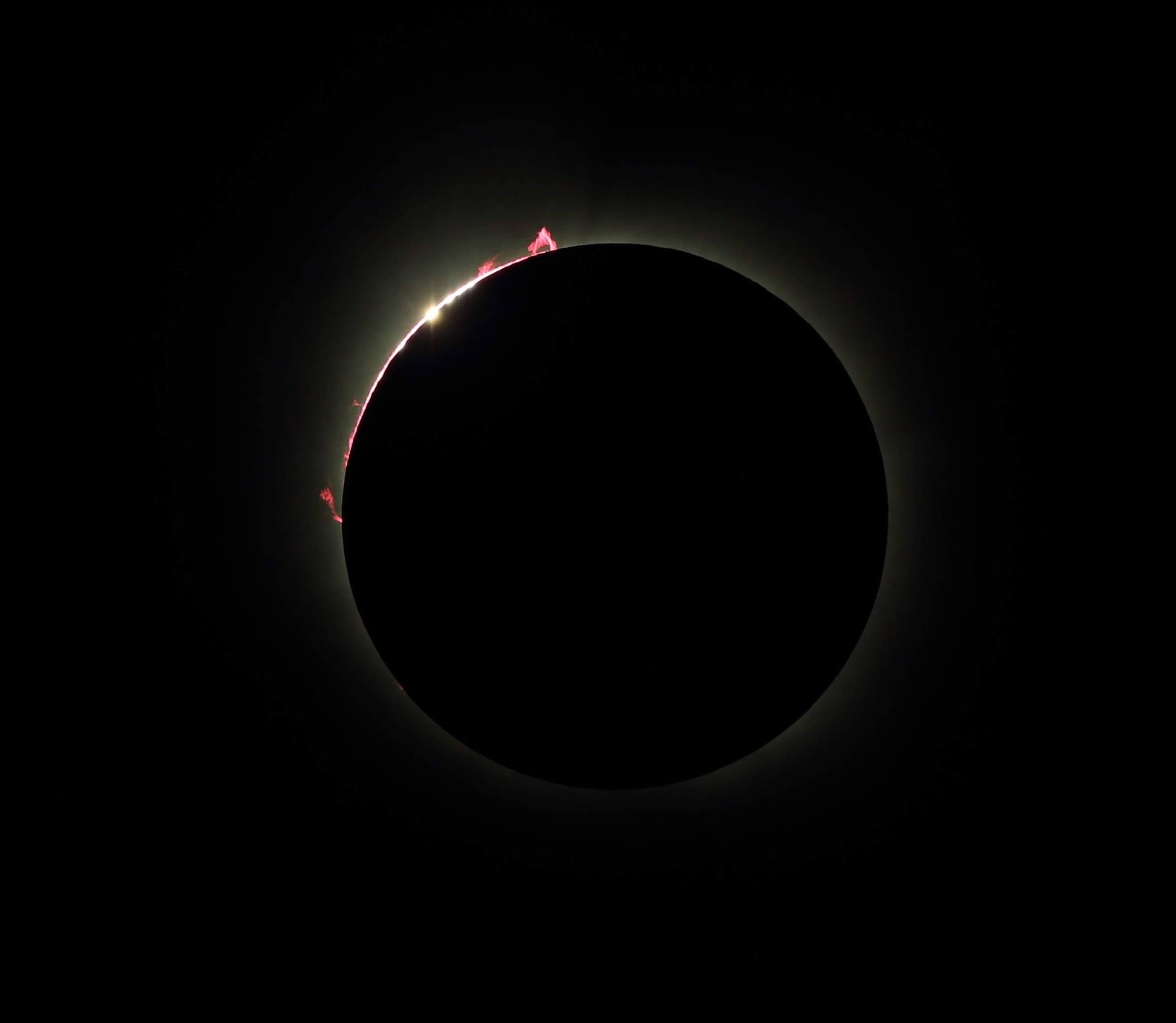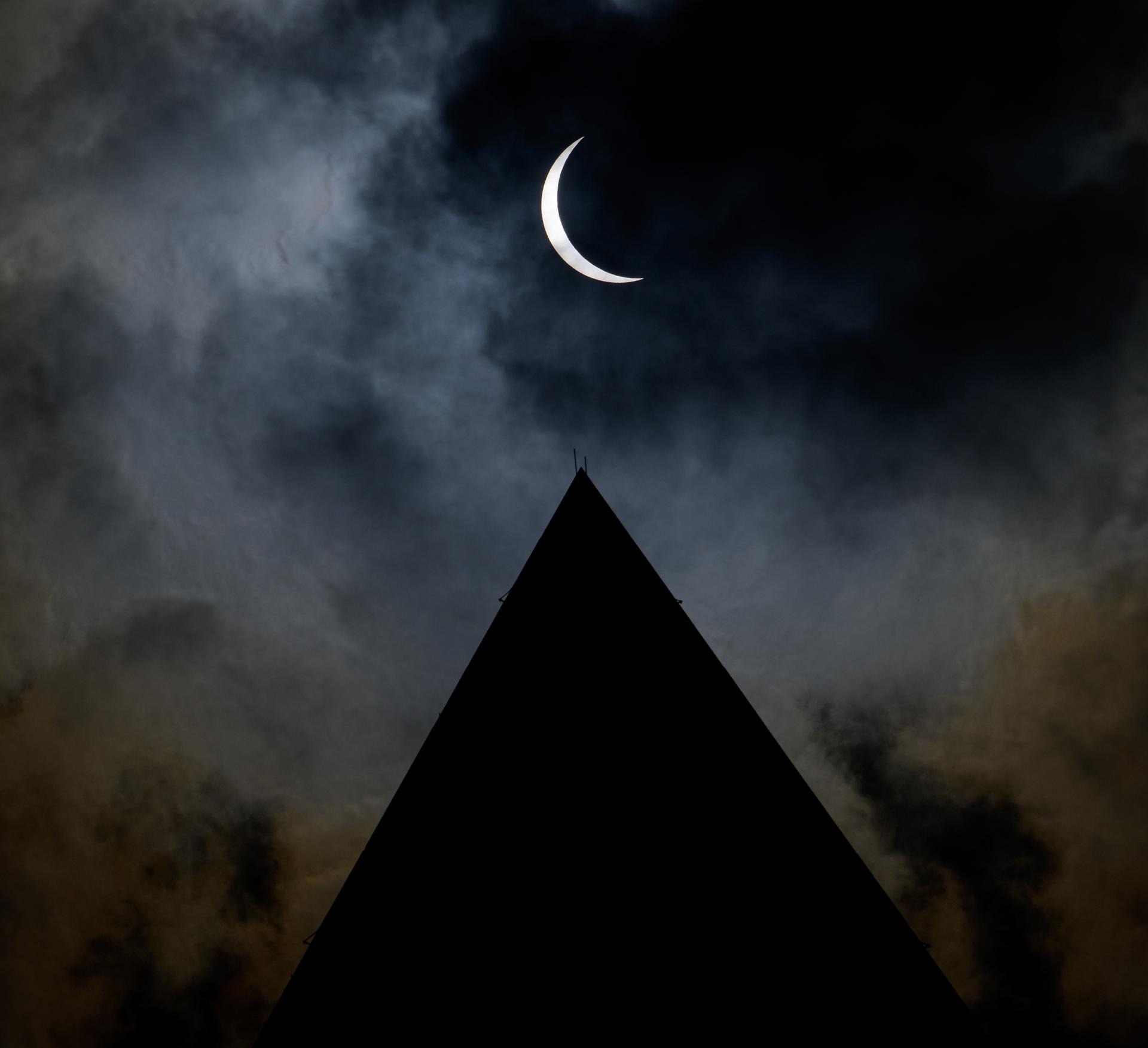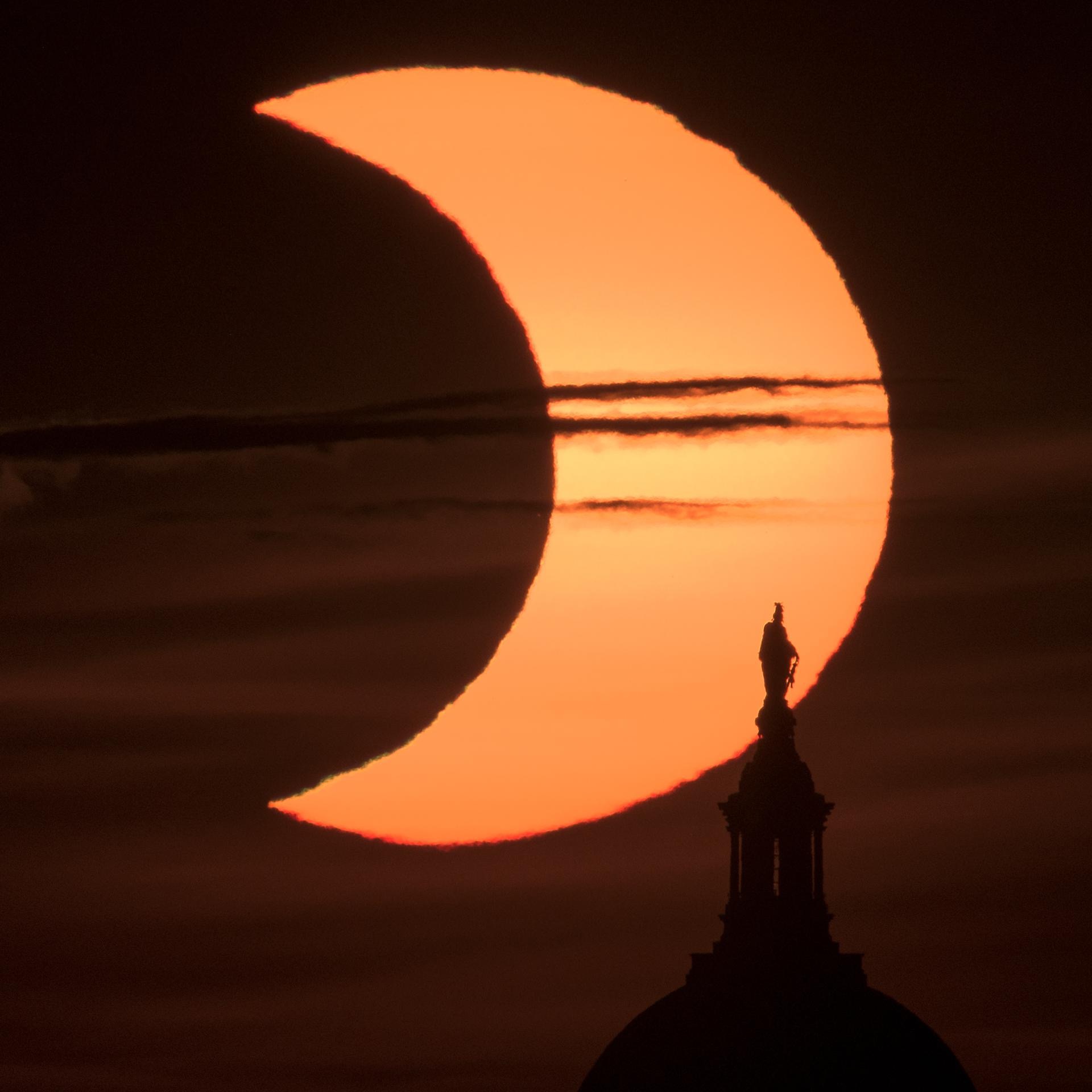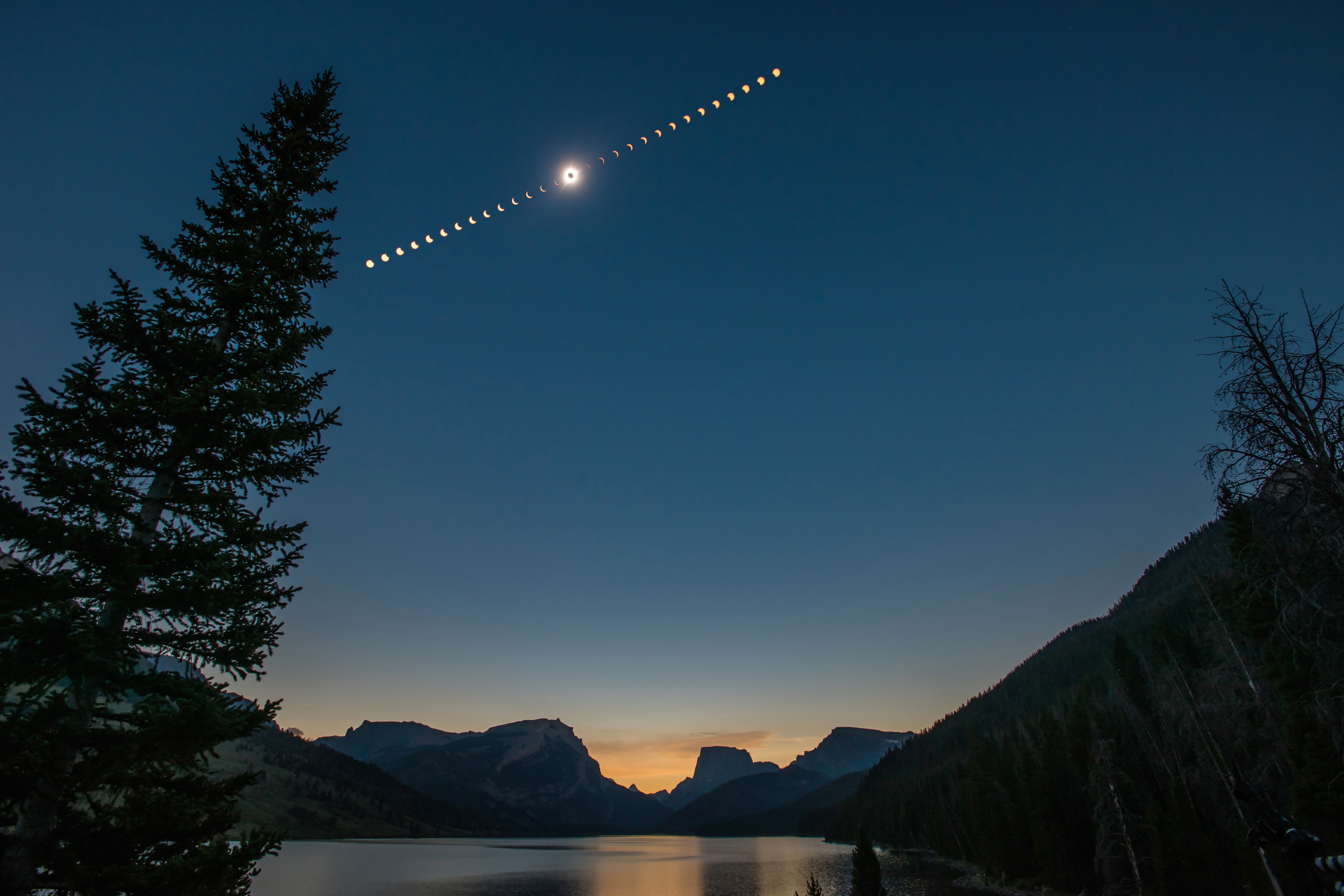
Key Takeaways:
It’s been seven long years since the last total solar eclipse to grace the skies above North America occurred Aug. 21, 2017. Now, the Moon once again passes directly in front of the Sun from this continent.
April 8 brings totality to viewers along a narrow path that begins on Mexico’s Pacific Coast and then heads north and east, cutting across the U.S. from Texas to the eastern Great Lakes and northern New England. The shadow also touches southern Ontario and Quebec before making its final landfall in the Canadian Maritimes.
You can find detailed maps of the eclipse path in “Astronomy’s atlas of totality” here, and weather prospects in “Your eclipse weather forecast” here. I’ll walk you through what you can expect to see throughout the eclipse and highlight both the spectacular and the subtle sights awaiting you April 8.
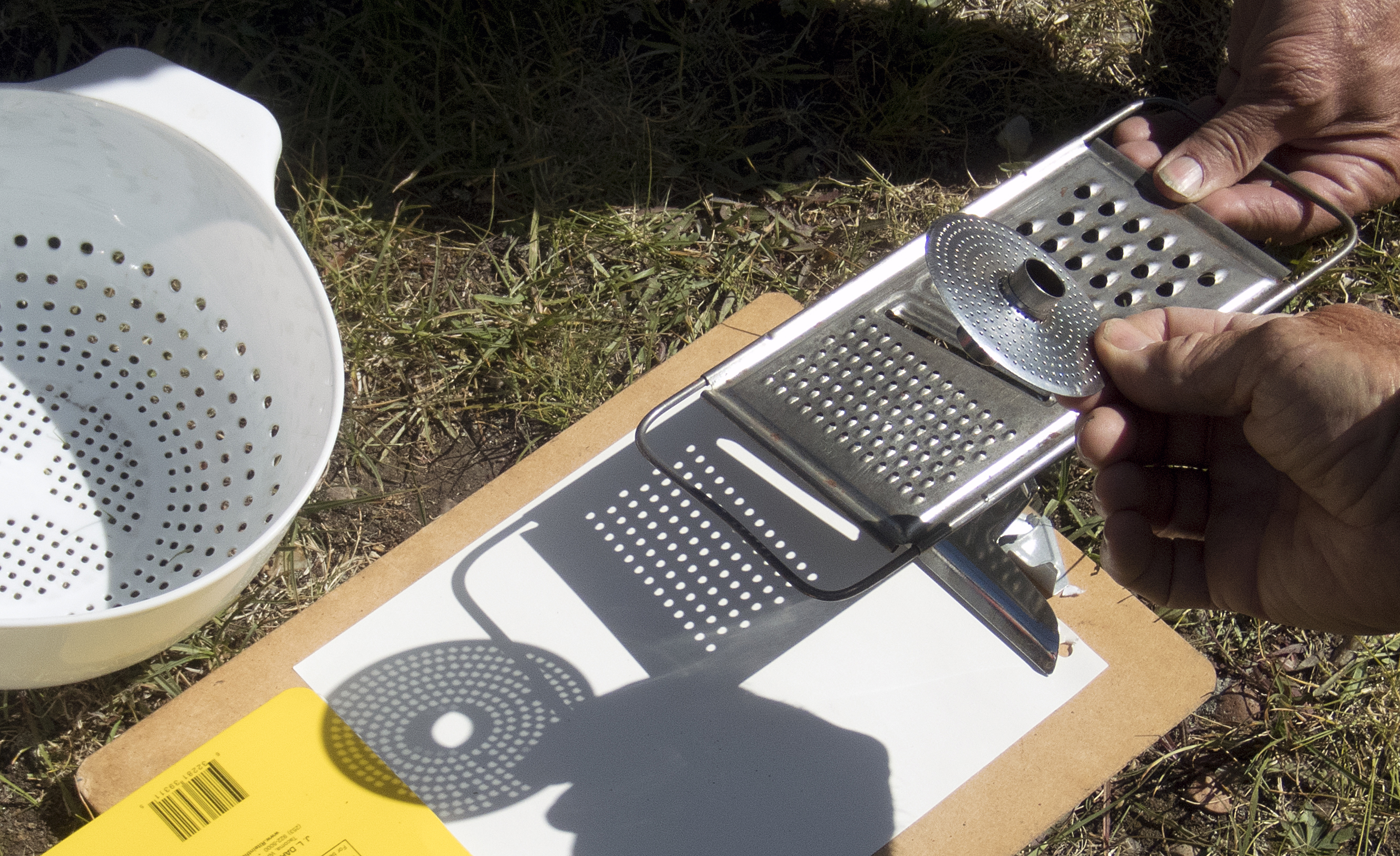
Eye safety comes first
No one can deny the beauty of a solar eclipse, but seeing one isn’t worth endangering your eyesight. Even a momentary look at the Sun with your naked eye during the partial phases risks long-lasting vision problems. A view through binoculars or a telescope can cause permanent blindness in a second or less. And the damage occurs painlessly, so you might not be aware of problems until hours later. The good news: You only need protection during the partial phases — you can view the Sun safely during totality, even with optical aid.
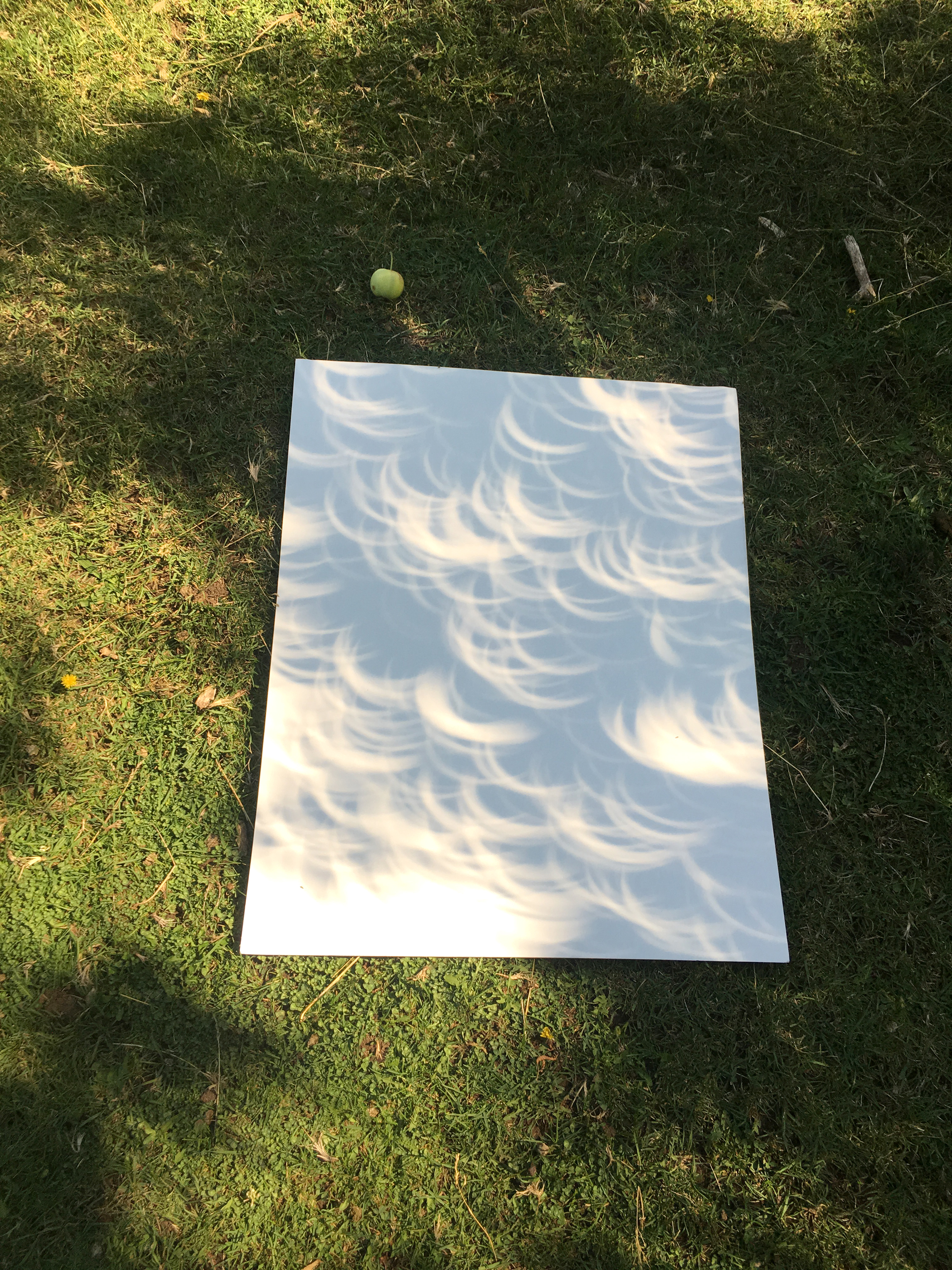
Credit: Kevin Crellin
Eclipse glasses are the easiest and cheapest way to protect your eyes. You can typically purchase them for a couple of bucks each. And if you’re on a dedicated eclipse tour, the organizers almost certainly will supply glasses to each participant. One note of caution, however: If you saved your eclipse glasses from seven years ago, toss them. The protective coating deteriorates over time and typically doesn’t last more than three years.
You’ll have to search a bit harder to find a No. 12, 13, or 14 welder’s glass. All of these block harmful infrared and ultraviolet light and cut out nearly all visible radiation, leaving just enough to safely view the Sun. The No. 12 delivers a brighter image, which some observers find a bit too intense.
If you want to view the partial phases in more detail, you’ll need either binoculars or a telescope specifically designed for viewing the Sun, or an approved solar filter that fits over the front of your optics. Using a telescope requires the most care. As silly as it sounds, your first task is to find the Sun. Don’t use the finder scope — it can blind you as effectively as the main instrument. In fact, you should keep the finder’s lens cap on to prevent anyone from accidentally looking through it. Instead, to point your telescope at the Sun, make the shadow cast on the ground by the tube as small as possible.
If you plan on showing the partial phases to a group, consider projecting the Sun’s image. This indirect method avoids any danger by having people look away from the Sun instead of toward it. You can repurpose a finder scope or a pair of binoculars for this task, as we explain in “Build a better Sun projector,” on page 26. (Or see our February issue for another projector design, one which uses dollar-store lenses.)
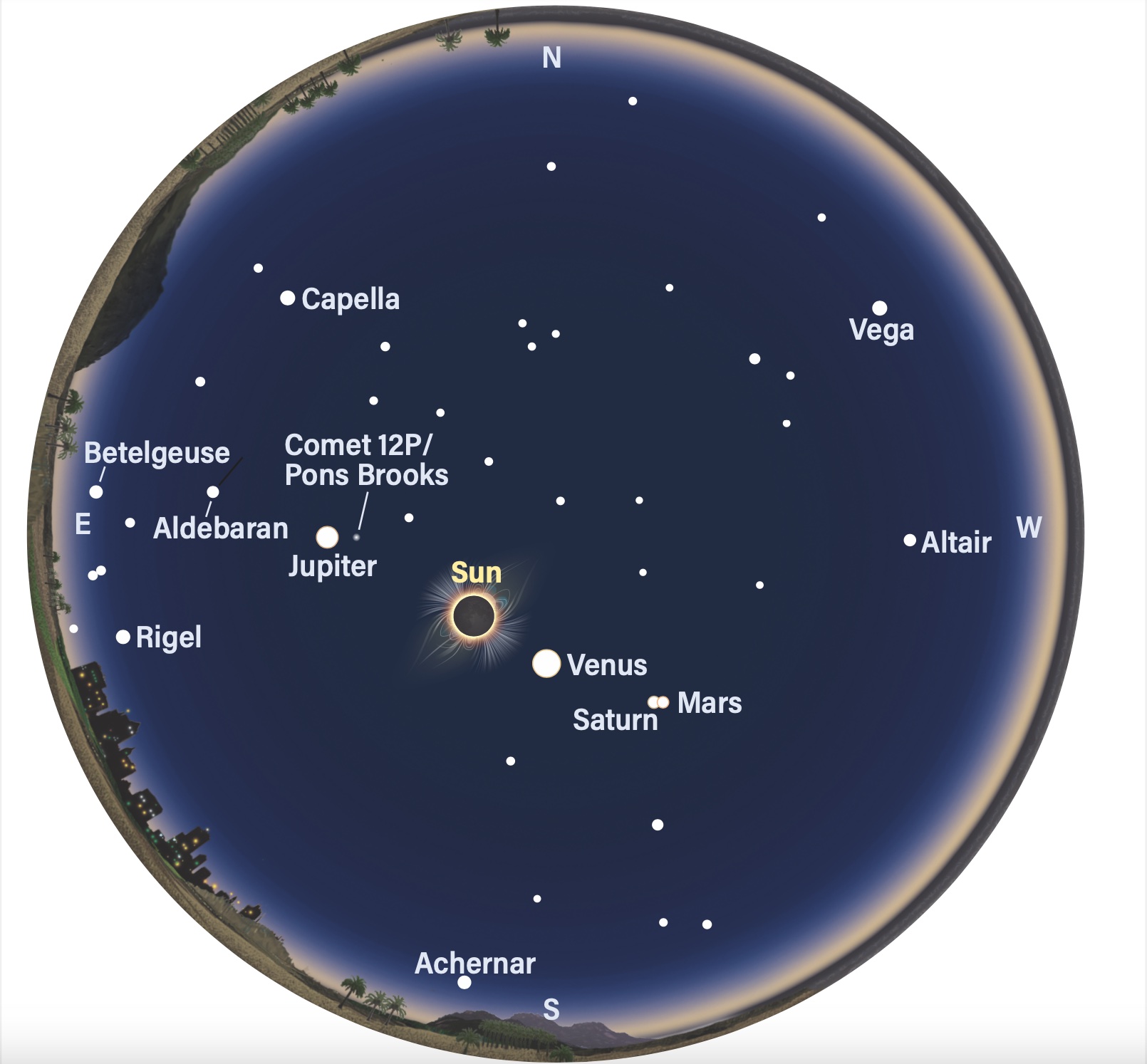
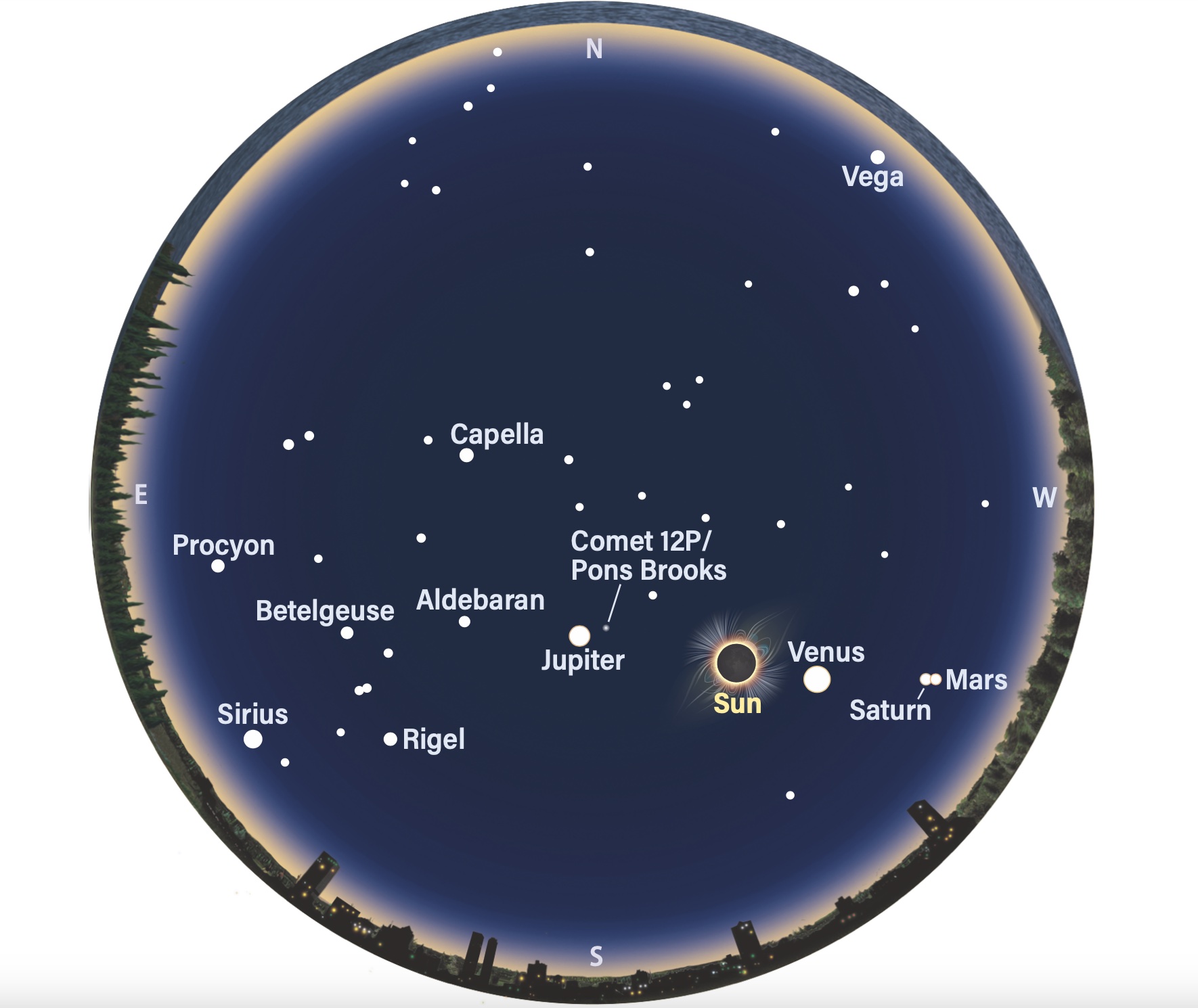
Credit: Astronomy: Roen Kelly
It’s go time
If you position yourself on the center line, the April 8 eclipse will last between two and three hours from first to fourth contact. That may seem like a lot of time, but as any veteran eclipse chaser will tell you, it seems to go by in the blink of a (well-protected) eye.
Unless you’re lucky enough to be able to witness the eclipse from your backyard, plan to get to your site long before the partial phases begin. You don’t want to risk being caught in traffic when the eclipse is underway. Arriving early also lets you set up any optical or photographic equipment at a leisurely pace.
If you’re viewing with lots of other people, a buzz will sweep through the crowd as first contact approaches. Although predictions made years before foretell the exact moment when the Moon’s limb, or edge, first touches the Sun’s disk, it’s something everyone wants to see for themselves.
From Mexico, the first bite appears on the Sun’s right side, near the 3 o’clock position. As the Moon’s shadow moves north and east, the point of first contact moves slowly clockwise, reaching the 5 o’clock position in the greater Cleveland area and nearly 6 o’clock from Newfoundland.
The next hour or so is one of breathless anticipation. Although the sky grows darker, it happens at such a languid pace that it’s hard to notice. (It doesn’t help that your pupils dilate to compensate for the light loss.) An occasional glance toward the Sun will convince you that the celestial machinery remains in good working order. For those viewing with binoculars or a telescope, watch the Moon’s dark limb as it swallows sunspots. With the Sun’s activity level ramping up as solar maximum approaches, there should be plenty of spots on display.
Once the Moon covers about 75 percent of the Sun’s disk, changes to your surroundings are hard to miss. The temperature drops noticeably from its peak around first contact. Consider bringing a small thermometer along to chronicle the change. Shadows also become sharper as the source of light in the sky dwindles to a thin crescent. And for a brief period, colors in the landscape appear more saturated, or intense.
Also take a moment to look beneath any leafy trees or bushes. The tiny gaps between the leaves project lovely images of the crescent Sun onto the ground. If your viewing site lies along the northern part of the track, you may not find any foliage to perform this trick. Don’t despair. An ordinary kitchen strainer or a stiff piece of cardboard with holes punched in it serves just as well.
Many members of the animal kingdom won’t realize an eclipse is happening overhead and will think darkness has started to fall. Watch for birds seeking a safe place to roost for the “night.” Other creatures react in different ways. One of my fondest eclipse memories came during the July 11, 1991, event. Our large group was viewing from a farmer’s field in Baja California, and about 15 minutes before totality, we saw a herd of cows heading from their pasture to the barn in anticipation of dinner.
Totality approaches
The pace of change accelerates quickly during the final two minutes before second contact, when totality begins. This is the time to search for shadow bands — an elusive pattern of thin wavy lines alternating between light and dark that ripple across the landscape. Look for them on the ground or the side of a building, or use a white sheet or large piece of poster board as a viewing surface.
Of all eclipse phenomena, shadow bands may be the subtlest. Many experienced eclipse viewers have never seen them, while others consider them a highlight. With so much else going on in the buildup to totality, you might not want to devote precious seconds to hunting for the bands. Instead, try recording a video of them with a tripod-mounted smartphone focused on your chosen viewing surface.
With just a few seconds to go before totality, the Sun’s dge starts to break up. Mountains along the Moon’s advancing limb punch through the thinning crescent while sunlight still streams through lunar valleys. The disappearing Sun looks like a string of pearls, called Baily’s beads after 19th-century British astronomer Francis Baily, who described the phenomenon after witnessing the May 15, 1836, annular solar eclipse in southern Scotland.
The Sun’s final blaze of glory comes when the multiple beads dwindle to a final jewel — the diamond ring — as sunlight gleams through the deepest valley on the Moon’s limb and the solar corona makes its initial appearance. It’s worth noting that some observers describe the diamond ring as a precursor to Baily’s beads. What order do you see them in?
Hello darkness, my old friend
Totality begins when the Moon’s relentless march finally douses the diamond ring. Put your eclipse glasses aside and remove the filters from your binoculars, telescope, and camera. With the Sun’s blazing surface, or photosphere, now blocked by the Moon, your eyes and optical equipment are safe from harmful solar radiation.
A few seconds after second contact, you might catch a fleeting glimpse of the solar chromosphere. This thin layer in the Sun’s atmosphere lies just above the photosphere and is only about 1,200 miles (2,000 kilometers) thick, so the Moon covers it quickly. As its name implies, the chromosphere appears colorful — a deep red emanating from excited hydrogen atoms.
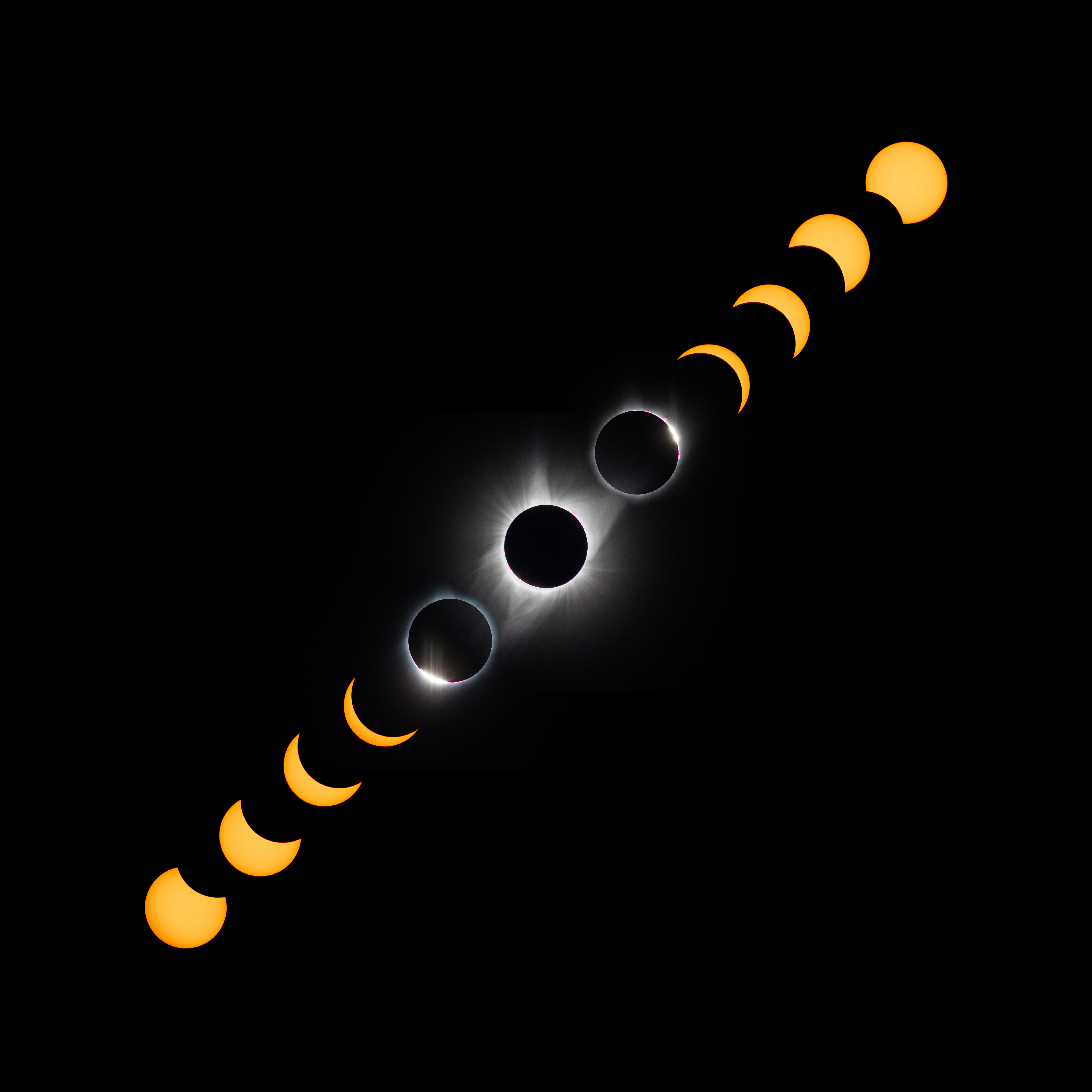
After the chromosphere departs, everyone’s attention turns to the corona. The wispy outermost part of the Sun’s atmosphere consists of highly ionized gases that glow pearly white. Delicate streamers extend millions of miles and reach a few times the Sun’s diameter. Although many first-time eclipse observers expect the corona to appear faint, it actually shines with an intensity similar to a Full Moon. And it appears brighter as totality advances and your eyes grow accustomed to the darkness. Start your corona observations with the naked eye, then progress to binoculars to search for loops, swirls, and streamers.
No one knows what the corona will look like during totality, but astronomers can make an educated guess. During periods of low solar activity, the corona tends to look asymmetric and sport many streamers. With the Sun now growing quite active, the outer atmosphere should appear round.
Although it might be tempting, don’t spend all of totality staring at the corona. Solar prominences along the Sun’s limb can be equally spellbinding. These fiery tongues of glowing hydrogen may seem to sprout from the Moon’s dark surface. In reality, they have feet planted in the photosphere and reach into the lower corona. Prominences often form loops as the Sun’s magnetic field shapes them.
Your surroundings can look equally spectacular. It’s worth spending at least a few seconds to take in the big picture. Twilight colors will ring the horizon as Earth’s atmosphere refracts long-wavelength sunlight into the path of totality.
And no eclipse is complete without a view of the brightest planets and stars. Venus will show up clearly some 15° west of the Sun. Gleaming at magnitude –3.9, the brilliant planet should be obvious 10 minutes before totality. Magnitude –2.0 Jupiter lies twice as far east of the Sun as Venus is west and should appear distinct during totality. If you observe from the northern U.S. or Canada, you also might be able to spot Sirius low in the southeastern sky.
Also keep an eye out for a potential guest appearance from Comet 12P/Pons-Brooks. This comet, which has delighted astroimagers with a distinctive horned appearance during outbursts over the second half of 2023, will lie 6° west of Jupiter and 24.5° east of the eclipsed Sun. If it follows projections — never a given with a comet — it could be seen in binoculars. If it is in an outburst, it may even be visible to the naked eye.
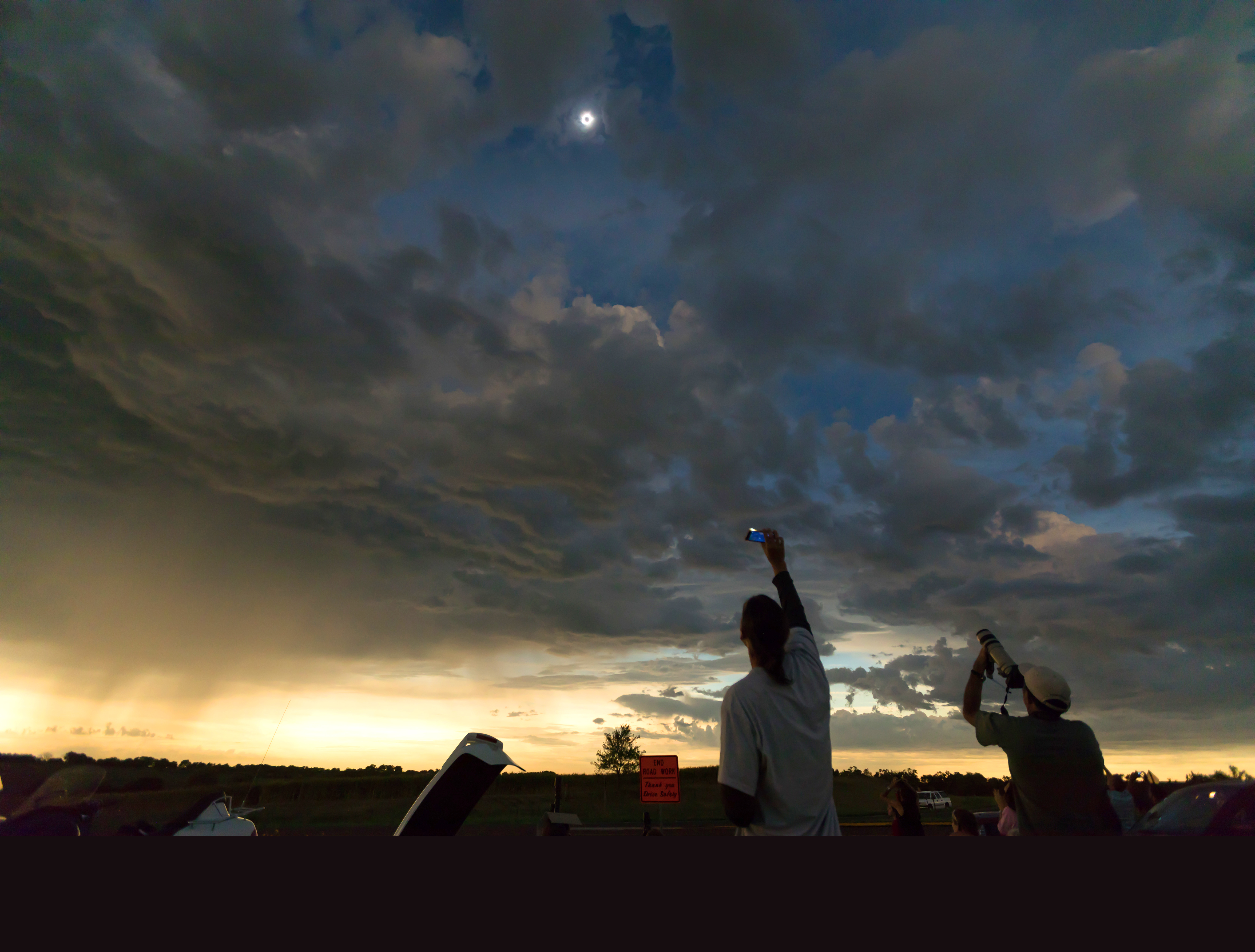
Winding down
Almost as soon as totality begins, it seems to end. Third contact — when a second diamond ring appears on the opposite side of the Moon from the first — signifies the conclusion of totality. Put filters back on your binoculars, telescope, and camera at the first hint of the diamond ring. Those using their naked eye can look at the diamond ring — brighter than the first one because your pupils have dilated — for up to five seconds before reverting to eclipse glasses or a filter.
To many observers, the eclipse is now over. Don’t fall into that trap. Sure, take a few minutes to celebrate with your companions, but then spend some time watching the partial phases play out in reverse. You might even find yourself appreciating Baily’s beads, shadow bands, projected crescents, and razor-sharp shadows better on the eclipse’s flipside without the anticipation of totality hanging over you.
Talk among eclipse enthusiasts inevitably turns to the next opportunity to witness totality. Although residents of North America will have to wait until 2044 for their next view, eclipse chasers likely will target Aug. 12, 2026, when totality washes over parts of Spain, Iceland, and Greenland.







